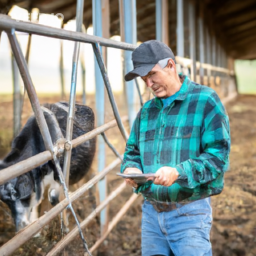In today’s agricultural landscape, optimizing livestock feed is essential for ensuring the health and productivity of animals while also maintaining cost-effectiveness. Enhancing livestock feed optimization with BI (Business Intelligence) has emerged as a game-changer, providing farmers with tools and insights to improve feeding strategies. Utilizing BI allows for precise tracking and analysis of feed consumption patterns, nutritional requirements, and overall animal health, thus leading to more efficient and sustainable farming practices.
The Role of BI in Livestock Feed Optimization
Business Intelligence, with its data analytics capabilities, plays a crucial role in livestock feed optimization. By integrating data from various sources such as feed usage, animal weight, and health parameters, BI tools help farmers to make informed decisions on feed composition and quantity.
Data Integration and Analysis
One of the key advantages of BI is its ability to integrate and analyze data from multiple sources. This integration allows farmers to understand the specific nutritional needs of different animal groups, thus enhancing feed optimization. For instance, by analyzing historical data, farmers can predict the future feed requirements and adjust their feed composition accordingly. This ensures that animals receive the right nutrients in the right amounts, preventing both underfeeding and overfeeding.
Real-Time Monitoring
Real-time monitoring is another significant benefit provided by BI systems. With real-time data on feed consumption and animal health, farmers can quickly identify and address issues. For example, if a particular feed is causing health problems in livestock, BI can help in quickly identifying the problem and making necessary changes to the feed composition.
Strategies for Implementing BI in Feed Optimization
To fully leverage the potential of BI in livestock feed optimization, farmers need to adopt specific strategies and best practices.
Choosing the Right BI Tools
Selecting the appropriate BI tools is a critical first step. Farmers should look for tools that are easy to use, provide accurate data, and offer insights that can be acted upon. Tools that offer features such as data visualization, predictive analytics, and real-time alerts are particularly beneficial.
Training and Education
Farmers and farm managers need to be trained in using BI tools effectively. Understanding how to interpret data and make data-driven decisions is crucial for successful feed optimization. Training programs and workshops can help in building this competency.
Collaboration with Nutritionists
Collaborating with animal nutritionists is essential for enhancing livestock feed optimization with BI. Nutritionists can provide expert guidance on the nutritional needs of different animal groups, which can then be integrated into the BI system. This collaboration ensures that the feed provided is not only optimized for cost but also meets the nutritional requirements of the animals.
Benefits of Enhancing Livestock Feed Optimization with BI
Implementing BI for livestock feed optimization offers numerous benefits, from cost savings to improved animal health.
Cost Savings
By accurately predicting feed requirements and optimizing feed composition, farmers can significantly reduce wastage and cost. This not only improves the profitability of the farm but also contributes to more sustainable farming practices.
Improved Animal Health and Productivity
Optimized feeding strategies lead to healthier animals, which in turn results in higher productivity. Healthy animals are more productive, which translates to increased milk production, better weight gain, and improved reproduction rates.
Enhanced Decision-Making
BI provides farmers with the data and insights needed to make informed decisions. Whether it’s deciding on the type of feed to use or the quantity to provide, BI ensures that these decisions are based on accurate and up-to-date information.
Conclusion
Enhancing livestock feed optimization with BI is a transformative approach that can lead to significant improvements in farm efficiency and productivity. By integrating data, real-time monitoring, and expert insights, BI enables farmers to make better decisions, reduce costs, and improve animal health. As the agricultural sector continues to evolve, the adoption of BI in livestock feed optimization will become increasingly important for sustainable and profitable farming.
FAQ
Q1: What is the primary benefit of using BI for livestock feed optimization?
A1: The primary benefit of using BI for livestock feed optimization is the ability to make data-driven decisions, leading to cost savings, improved animal health, and increased productivity.
Q2: How does real-time monitoring help in feed optimization?
A2: Real-time monitoring helps in feed optimization by providing up-to-date data on feed consumption and animal health, allowing farmers to quickly identify and address issues.
Q3: What are the key considerations when choosing a BI tool for feed optimization?
A3: When choosing a BI tool for feed optimization, key considerations include ease of use, accuracy of data, features like data visualization and predictive analytics, and real-time alerts.
Q4: Can BI tools help in predicting future feed requirements?
A4: Yes, BI tools can analyze historical data to predict future feed requirements, enabling farmers to adjust their feeding strategies accordingly.
Q5: How does collaboration with nutritionists enhance feed optimization?
A5: Collaboration with nutritionists enhances feed optimization by ensuring that the feed provided meets the specific nutritional needs of different animal groups, thus improving animal health and productivity.



